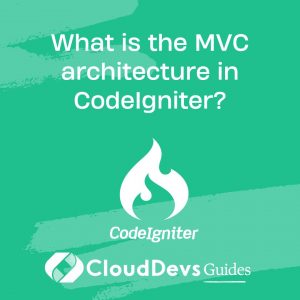What is the MVC architecture in CodeIgniter?
The MVC (Model-View-Controller) architecture is a fundamental design pattern in CodeIgniter that helps developers organize and manage their web applications in a structured and maintainable way. It’s a powerful paradigm that separates the application’s logic into three interconnected components:
- Model: The Model represents the data and business logic of your application. It deals with database interactions, data validation, and any computations or manipulations necessary for your application’s functionality. In CodeIgniter, models are typically responsible for retrieving and storing data in the database, and they encapsulate data-related operations.
- View: The View is responsible for presenting the data to the user. It handles the user interface, rendering HTML, and displaying information to users. Views in CodeIgniter are used to create the visual representation of the data and are often written in HTML with embedded PHP to dynamically generate content.
- Controller: The Controller acts as an intermediary between the Model and View. It receives user requests, processes them, interacts with the Model to fetch or manipulate data, and then determines which View should be used to present the data to the user. Controllers in CodeIgniter contain methods that correspond to specific URLs or actions and are responsible for controlling the application’s flow.
The MVC architecture in CodeIgniter offers several advantages, including code organization, separation of concerns, and maintainability. It allows developers to work on different aspects of an application independently, making it easier to collaborate and manage large codebases. Additionally, it promotes code reusability and helps ensure that changes to one part of the application do not adversely affect others. CodeIgniter’s implementation of MVC provides a solid foundation for developing scalable and maintainable web applications.








